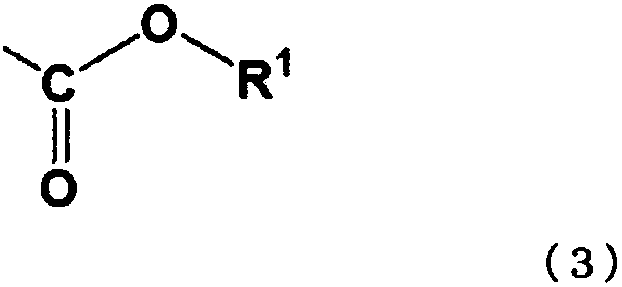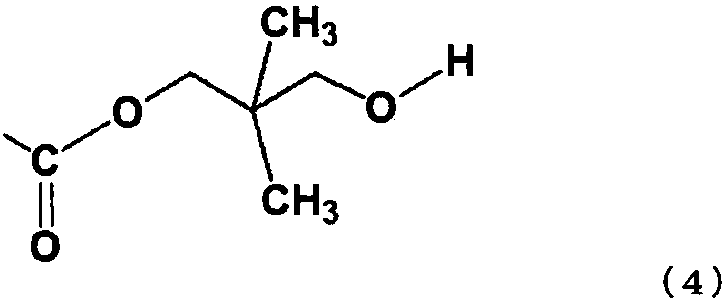Ester for refrigeration oil and working fluid composition for refrigeration oil
A technology for refrigerating machine oil and working fluid, which is applied in the field of esters for refrigerating machine oil, can solve the problems of high solubility, harsh lubrication conditions, and decreased viscosity, and achieves the effects of high compatibility and high heat resistance
- Summary
- Abstract
- Description
- Claims
- Application Information
AI Technical Summary
Problems solved by technology
Method used
Image
Examples
Embodiment 1
[0098] Preparation of Example 1
[0099] Add 124g (1.19mol) of neopentyl glycol, 30g (0.34mol) of 1,4-butanediol, 355g (2.43mol) of adipic acid, and 339g of 3,5,5-trimethylhexanol into a four-neck flask (2.35 mol), the reaction water was distilled off at 120° C. under a nitrogen atmosphere, and the reaction was carried out under normal pressure for 3 hours at the same time. Then, the reaction was continued at 200° C. for 7 hours until the acid value was 2 or less. Excess 3,5,5-trimethylhexanol was then removed by distillation at 200° C. under a reduced pressure of 1 to 5 kPa to obtain a crude ester. The crude ester was cooled, and an acidic white clay and a silica-alumina-based adsorbent were added thereto so as to account for 1.0% by mass of the theoretically obtained ester amount, respectively, to perform an adsorption treatment. The adsorption treatment temperature, pressure, and adsorption treatment time were set at 100° C., 1 to 5 kPa, and 2 hours. Finally, filter wit...
Embodiment 2
[0100] Preparation of Example 2
[0101] Add 180g (1.73mol) of neopentyl glycol, 25g (0.28mol) of 1,4-butanediol, 360g (2.47mol) of adipic acid, and 256g of 3,5,5-trimethylhexanol into a four-necked flask (1.78 mol), the water of reaction was distilled off at 115° C. under a nitrogen atmosphere, and the reaction was carried out under normal pressure for 4 hours at the same time. The subsequent steps were carried out in the same manner as in Example 1 to obtain the target ester.
Embodiment 3
[0102] Preparation of Example 3
[0103] Add 205g (1.97mol) of neopentyl glycol, 26g (0.28mol) of 1,4-butanediol, 373g (2.55mol) of adipic acid, and 217g of 3,5,5-trimethylhexanol into the four-necked flask (1.50 mol), the reaction water was distilled off at 125° C. under a nitrogen atmosphere, and the reaction was carried out under normal pressure for 3 hours. The subsequent steps were carried out in the same manner as in Example 1 to obtain the target ester.
PUM
 Login to View More
Login to View More Abstract
Description
Claims
Application Information
 Login to View More
Login to View More - R&D
- Intellectual Property
- Life Sciences
- Materials
- Tech Scout
- Unparalleled Data Quality
- Higher Quality Content
- 60% Fewer Hallucinations
Browse by: Latest US Patents, China's latest patents, Technical Efficacy Thesaurus, Application Domain, Technology Topic, Popular Technical Reports.
© 2025 PatSnap. All rights reserved.Legal|Privacy policy|Modern Slavery Act Transparency Statement|Sitemap|About US| Contact US: help@patsnap.com



